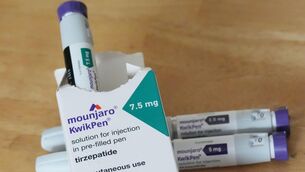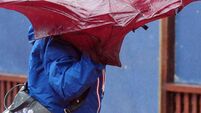Ardmore is the physical heart of the Irish film industry

Before the studio’s opening, Ireland was confined to location shooting, representing only a small part of the completed film. Following the launch of Ardmore, international filmmakers began to view Ireland as an attractive filming location.
The first film to take the stage was a screen adaptation of Walter Macken’s acclaimed play Home is the Hero in 1958, directed by the award-winning Fielder Cooke. Macken himself took the title role.
Ardmore’s first major movie came in 1959. Shake Hands with the Devil was set during the War of Independence and starred James Cagney and Dana Wynter. Another Hollywood legend, Robert Mitchum, arrived in 1960 to star in A Terrible Beauty.
For Martin Ritt’s acclaimed 1965 film The Spy Who Came in from the Cold, areas of Germany were reconstructed within the studio complex. In 1966, The Blue Max saw areas of Wicklow transformed to recreate the Battle of the Somme.
In 1963, Francis Ford Coppola shot his first film in the Wickow studios for a budget of £30,000, 10 years before he directed The Godfather. His low-budget thriller Dementia was completed in three weeks.
In 1975, director John Boorman became chairman of the studios, with Sheamus Smith as managing director. They oversaw the newly revamped venue welcome several films including The Purple Taxi, with Peter Ustinov and Fred Astaire; The Last Remake of Beau Geste, directed by Marty Feldman; and The Great Train Robbery, written and directed by Michael Crichton and starring Sean Connery.
In 1981, Boorman began shooting his own $11m budget movie, Excalibur, at the Wicklow studios, enlisting the novice talents of Liam Neeson, Gabriel Byrne, and Ciarán Hinds, as well as Neil Jordan in his first film-making role as a creative associate.
“I’ve worked at every major studio in America, including Paramount, Warner Brothers, and 20th Century Fox, and Ardmore is, in my opinion, on a par with any of them,” Gabriel Byrne said recently.
“Its track record over the years as a first class studio speaks for itself.”
Ardmore-based projects have led to award wins for dozens of actors and filmmakers. Katharine Hepburn received an Oscar for her role in 1968’s The Lion in Winter, while Daniel Day Lewis and Brenda Fricker picked up Oscars for their roles in My Left Foot. Mel Gibson made extensive use of the studios for Braveheart and collected five Academy Awards.
In more recent times, Ardmore was home to The Tudors, with the four-season series having a combined budget of about €90m. “The closeknit environment of Ardmore, the rest of Wicklow, and Dublin was such a successful location and position for us to be in because, in a very small area, we had a series of fantastic locations that enabled us to achieve the award winning look of The Tudors,” said location manager Edmund Sampson.
“You can hop from an army on the rise marching over the hill to King Henry VIII walking through his gardens with whichever wife he was with at the time, and then you hop into Dublin and you have amazing locations like Christ Church Cathedral, Dublin Castle, Kilmainham Gaol, the Royal Hospital in Kilmainham, Drimnagh Castle, the Phoenix Park. And all these things are so close together. All of which obviously helped us achieve the huge undertaking in a very brief period of time.”












